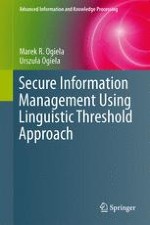2014 | OriginalPaper | Chapter
3. Types of Information Splitting and Sharing Techniques
Authors : Marek R. Ogiela, Urszula Ogiela
Published in: Secure Information Management Using Linguistic Threshold Approach
Publisher: Springer London
Activate our intelligent search to find suitable subject content or patents.
Select sections of text to find matching patents with Artificial Intelligence. powered by
Select sections of text to find additional relevant content using AI-assisted search. powered by
